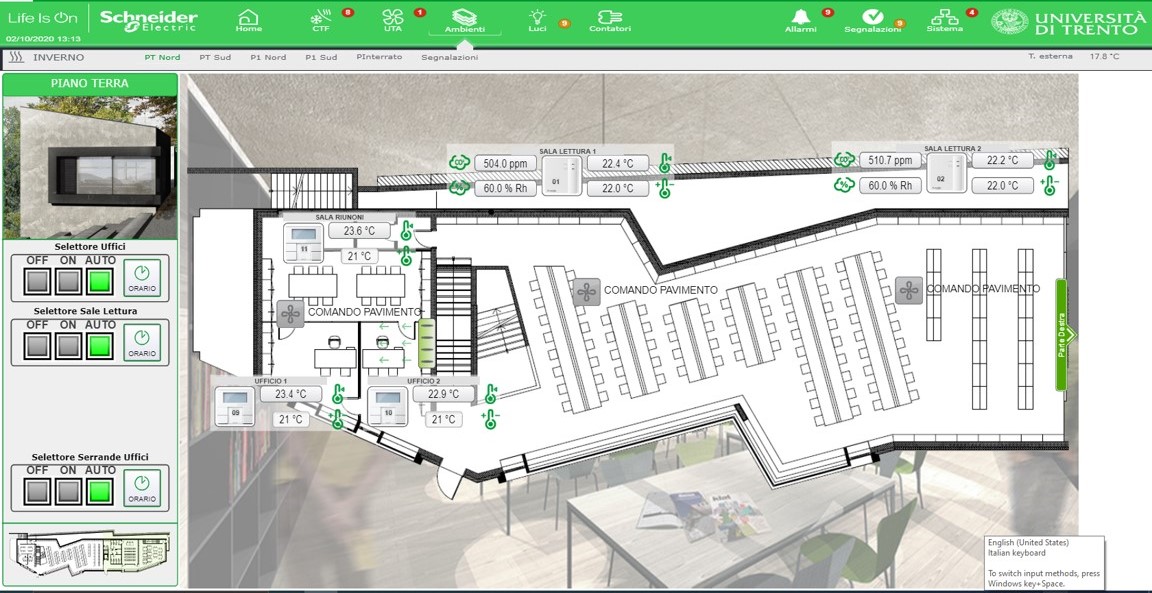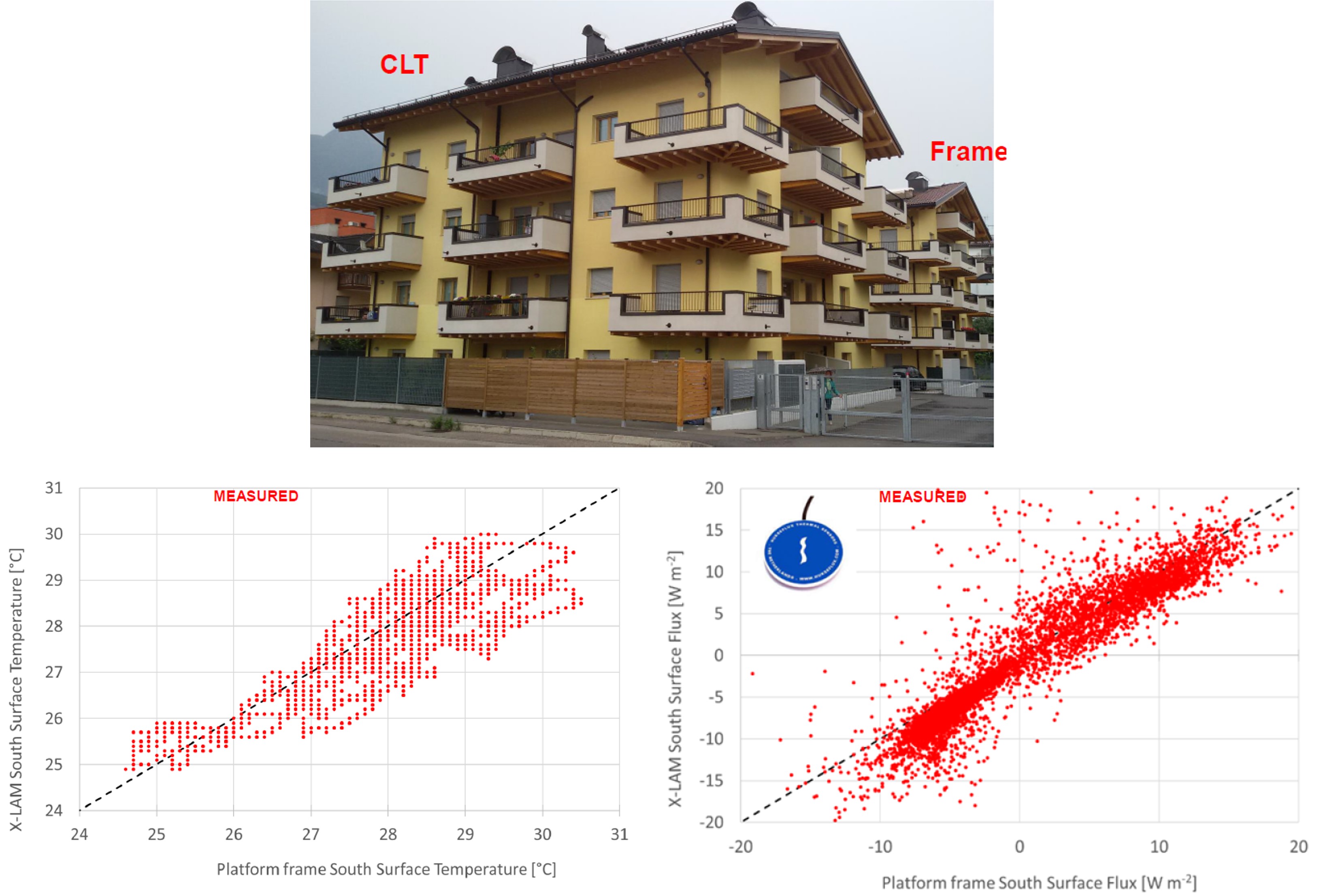Real Buildings Monitoring
The monitoring of real buildings is an essential step in understanding their actual energy behavior and optimizing the performance of buildings and their systems. This process allows for the collection of data regarding various internal parameters, such as temperature (T), relative humidity (RH), and CO₂ concentration, while also enabling real-time monitoring of the HVAC system status and performance. This procedure serves multiple purposes. It facilitates the calibration and validation of dynamic energy simulation models for buildings, ensuring their reliability. Additionally, it can be used to develop and optimize control strategies, both innovative and existing, as well as to create new calibration techniques that are both accurate and more time-efficient than traditional complex methodologies. This aspect plays a key role in supporting decision-making processes related to building retrofits and energy management.
Different case studies have been carried out in the context of real buildings monitoring. Two examples are (i) the University library of the Environmental, Civil and Mechanical Engineering Department (DICAM), named BUM, while (ii) the other focuses on multi-story residential buildings located in the city of Trento.
Study Cases
Monitoring of the DICAM Library
The library's dynamic monitoring system tracks internal environmental conditions, including temperature, CO2 levels, and relative humidity, to evaluate the building's performance in real operating conditions. It also controls indoor lighting system, as well as the HVAC system, which operates by coupling two different heat pumps (an air-source heat pump and a geothermal one).

Monitoring of Multi-Story Residential Buildings
The laboratory is actively involved in the in-situ monitoring of buildings to assess their real behavior under operational and environmental conditions. This activity is crucial, as buildings often perform differently in real life compared to what is predicted by simulations or laboratory tests—particularly regarding the thermal behavior of opaque envelope components, which can vary significantly under dynamic ambient influences. Thanks to a comprehensive acquisition system, the lab conducts detailed in-situ measurements of surface and internal temperatures, heat fluxes through building elements, and overall energy consumption. These data allow for the accurate characterization of thermal performance, the evaluation of performance indices, and the identification of discrepancies between expected and actual behavior. Ultimately, this monitoring supports the development of more reliable models and contributes to improving building design, retrofitting strategies, and energy efficiency in practice.
